�
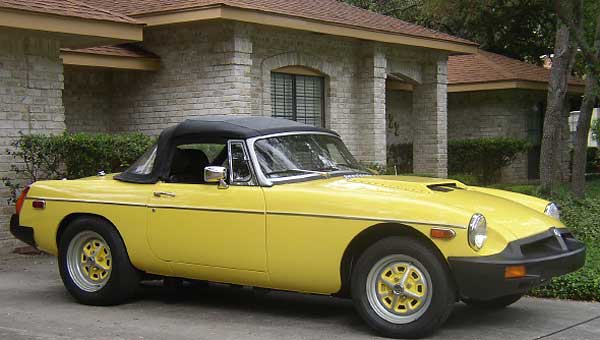
�
Leonard Marshall's 1979 MGB with Ford 302 V8 engine
� as published in British V8 Newsletter, Volume XIV Issue 3, December 2006� (Additional photos and more detailed photo captions added in June 2012.)�
� Owner: Leonard Marshall
� City: San Antonio, TX
� Model: 1979 MGB
� Engine: Ford 302 V8
� Conversion performed by: Owner
�
Features and Specifications
�| Engine: | �Ford 302cid engine, with 165 Air Flow Research heads.�
The engine was built following specifications from a Car Craft magazine article:�
"400 HP with a Stock Cam" by Matthew King.�
The only deviations from the article were use of a Holley 685cfm "Street Avenger" �
carburetor in lieu of a Demon 625cfm carb, and use of Hedman block-hugger headers in �
lieu of Tri-Y headers. I estimate an 8 to 10 HP loss due to the headers, 390+ HP at the �
flywheel, and 330-335 HP at the rear wheels! � A Vintage-Air "Front Runner" serpentine-belt drive system for the alternator, air � conditioning compressor, and water pump shortens engine length by 1-5/9 inches! � Custom 180 degree thermostat housing was made and installed for hood clearance. � All accessories, valve covers, and the engine compartment are painted in "hammered" � black paint. | �
| Intake: | �Weiand "Stealth" manifold (ported and polished).�
Holley "Street Avenger" 685cfm carb with electric choke.�
Moroso 14" air cleaner with 1.5"-dropped lower plate.�
K@amp;N 2-3/4" tall air filter.�
Stock Ford GT roller cam with 1.7:1 ratio Crane roller rockers, for 0.473" lift and 115.5 degree duration.�
(Extremely smooth idle and exceptional off-idle response!)�
AFR valve springs (both intake and exhaust.) | �
| Exhaust: | �Hedman block-hugger 4-into-1 headers with 2.5" collectors,�
Jet Hot coated both inside and out.�
2.5" custom dual exhaust, with H-pipe (see photo).�
2.5" Summit turbo mufflers.�
(They sound very mellow until you hit the accelerator.)�
Fuel tank relocated 1.5" toward the driver's side to provide clearance for twin tailpipes. | �
| Ignition: | �Mallory Hyfire VI multi-spark (mounted in driver-side footwell).�
Mallory dual point distributor with mechanical advance.�
(Initial timing is set at 16 degrees, with total advance of 36 degrees at speed.)�
Taylor 8mm yellow spark plug wires.�
Autolite Iridium (0.06mm) spark plugs, gapped to 0.042". | �
| Starting/Charging: | �JEGS mini double-reduction starter with heat shielding.�
(The starter is the only load on the original cable from the battery.)�
Optima dry cell battery.�
145 amp single-wire alternator.�
A jump-start stud is mounted through the passenger-side inner fender, between �
the slam panel and the radiator mounting. | �
| Cooling: | �Tru-Cool aluminum radiator, 21.5" wide by 19" tall by 2.25" core thickness, with 1" turbulated tubing. � Vintage Air 3700cfm electric fan.� The fan pulls 27 amps.� It's on a separate circuit with a relay and 80 amp maxi-breaker.� Power for the fan comes through a 6 gage cable from a battery supply post� (i.e. jump-start stud) that's mounted through the right front inner fender.� This battery supply post is in-turn supplied by a 2 gauge cable from the battery. � An auxiliary radiator, 10" wide by 14" tall by 2.5" core thickness, is mounted in the � left rear wheel well with air-flow provided by a 1000cfm Perma-Cool electric fan. � Auxiliary 4" electric fans mounted (rated 150cfm each) in the inner fenders help � remove air from the engine compartment into the wheel wells. � Custom short-shaft high-output water pump (over-driven). | �
| A/C System: | �All A/C lines are routed through a custom Vintage-Air piping system that runs down �
the front of the engine (hidden), under the engine, and into the left wheel well. �
The A/C lines are then routed to the condensor, drier, safety switches, and back. �
A/C lines are hidden within the car, as are ducts and louvers. | �
| Front Susp.: | �Stock MGB (rebuilt) with polyurethane bushings throughout. | �
| Rear Susp.: | �Stock MGB (rebuilt) with polyurethane bushings throughout, plus traction bars and a Panhard rod. | �
| Drivetrain: | �Ford T5 "World Class" transmission with the following ratios:�
1st 3.35:1, 2nd 1.99:1, 3rd 1.33:1, 4th 1.00:1, 5th 0.68:1. � Ford 11" diaphragm clutch with Wilwood master cylinder.� (Note: a stock MGB slave cylinder was originally fitted, but pedal travel was too long.� A Howe pull-type slave will replace it.) � Ford 8.8 rear axle (from a 1988 "Turbo Coupe") with 3.73:1 ratio and limited slip differential.� The axle has been shortened to 46.25" overall, using Moser 28-spline axle shafts,� and is mounted on 1.5" lowering blocks. � Custom driveshaft (23.4" long) rated at 450 HP. | �
| Brakes: | �Front - MGB calipers with drilled-and-grooved rotors and Triumph TR8 pads. � Rear - Ford discs (10.5" rotors) and pads. � Chrysler master cylinder with 0.822" bore and #2 retention valves.� MGB power booster removed.� Ratio on pedal changed from 6:1 to 4.5:1. | �
| Wheels/Tires: | �Front wheels are stock MGB Rostyle type with 185x60R14 Falken tires (130mph rated). � Rear wheels are stock MGB Rostyle centers re-mounted into 15" by 8" Stockton rims with 4.75" offset.� 225x60R15 Falken tires (130mph rated). � Wheel centers have been painted to match car.� All four wheels fit within un-modified wheel wells, although the rear is very close. | �
| Electrical: | �Stock MGB gauges in dash, except Auto-Gauge Tach.�
An additional temp gauge and voltmeter have been fitted in the center console.�
Sony "Explode" radio with rear-mounted 6" Pioneer speakers. �
All electrical loads are relay-switched (10 relays).�
Halogen headlights.�
Piezo buzzer added to the blinker circuit. | �
| Exterior: | �Hood modified with a Mustang-style hood scoop for 1.5" of additional clearance to the air cleaner. � Over 300 hours of bodywork to create a really smooth car. � 1969 Corvette "Daytona Yellow" (PPG 2094) basecoat/clearcoat paint, sprayed by Billy Lieke of � Artisan's in San Antonio. (Many thanks to Billy for his guidance on the body work � and most of all his friendship!) The paint was rubbed out by Jay Lieke, with the � final rub at 4000 grit. | �
| Misc. Chassis: | �Extra floor crossmembers (12" forward of stock location) and longitudinal reinforcements �
(from front leaf spring hangers forward, made from 16-gage steel) added to improve rigidity. �
The firewall was extensively modified to allow a 6" engine setback - and to avoid any �
modification to the front suspension crossmember.�
The stock transmission crossmember was relocated rearward 4.25".�
Headers fit without modification. � The rear axle bump-stop mounts were removed from the frame to provide extra clearance � for the rear wheels/tires. | �
| Costs: | �The total cost of the project was $17877.28, which includes engine, transmission, �
trim/restoration parts, and paint - but doesn't include Leonard's labor. � Noteworthy specific costs included: bodyshell (no engine) $1800, engine $1500, aluminum heads $1307, � remaining engine parts $593, A/C system $3037, engine electrical $929, transmission $500, � rear axle $500, narrowing of axle housing $110, axle shaft shortening $225, driveshaft � shortening $121, rear wheel conversion (15") $276, paint (materials) $1047, paint (labor � for spraying) $1025, paint (labor for rub-out) $500. | �
| Tools Used: | �Wire welder, TIG welder, plasma cutter, 48" brake, 48" shear, in-shop post lift, and �
a full complement of air tools. | �
| Weight: | �2402 pounds, dry. | �
| Performance: | �Quick! Runs straight in first gear, and gets a little loose on second gear shift, with �
equally strong performance in third.�
The engine turns 2000rpm at 60mph and redlines at 6200rpm.�
Top speed is estimated at 165mph in fifth.�
I don't have the coefficient of drag of the MGB so I can't plug it into the computer to�
find out if I have sufficient horsepower to achieve 165, but I doubt the car has sufficient�
down-force to be stable above 125/130mph. | �
| Miles Driven: | �400, as of October 2006. | �
| Completed: | �June 15, 2006. (Note: project started in 2002.) | �
| Comments: | �I want to thank my brother, Alan Marshall, for invaluable assistance and also for use �
of his shop. � This build was complicated by the 6" engine setback, which required elimination of the � heater shelf, widening of the transmission tunnel, and altering the footwells (making � them narrower by 2-1/2").� The patch panels for this work were formed on a brake from 16 gage steel, and were� welded-in all along their perimeter.� This actually made the car's body stronger than original.� A 1/2" box-section steel tube was welded from the right to left steering protrusions at� the firewall and top of the tunnel. � The steering shaft had to be custom built and routed through Borgesson steering � u-joints, down to the rack-and-pinion. � Because of the location of the universal joints and the driveshaft, the original handbrake � was removed. It's replacement has not yet been designed. � The use of a 21-3/4" wide NASCAR-type radiator created other problems.� The car's frame had to be sectioned and reinforced with fabricated gussets to accept the radiator. � On a 100 degree day, the engine runs at 170-180 degree water temperature, even with the � A/C on. � The 8.8" rear axle has a very large center section, and body clearance is minimal with � the 1.5" lowering blocks.� Two rubber pads were fitted to the center section as bump stops.� The Panhard rod is mounted to the same bracket as these pads. � I wouldn't suggest this ambitious an engine swap for anyone who doesn't have significant � experience and also access to a full shop. | �
| �
Editor's Note: Leonard's MGB features a particularly well-sorted V8 engine installation. Most�
aspects of the original design have proven perfectly reliable and satisfactory. For example,�
the engine's cooling system has proven equal to the the task of withstanding summertime weather�
in San Antonio, Texas. The photos on this page are from 2006 and 2012 respectively. If you�
study the photos carefully, you can see aspects of the car that have been upgraded. Specifically,�
the car now has different mufflers than originally described (e.g. glass-pack style mufflers�
instead of turbo mufflers). Residual pressure valves have been added to the brake lines, both�
front and rear, to improve pedal feel. A different style of front shock absorber is now installed.�
A shield has been installed above the engine cooling fan. There may be other changes; the�
Features and Specifications text (above) has not been updated.�
� |
Engine Installation
��
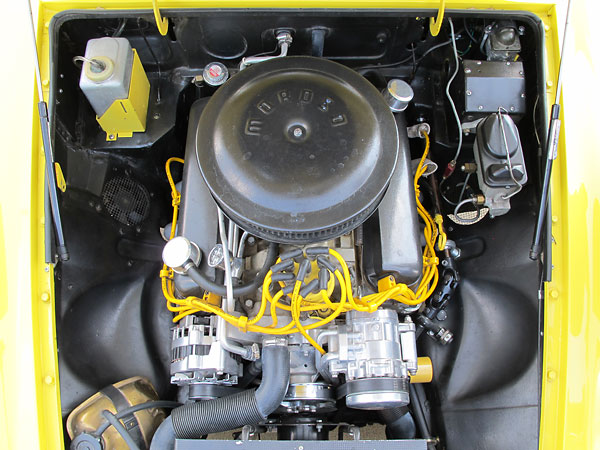
�
Ford 302cid engine with Air Flow Research model 165 aluminum cylinder heads.
�
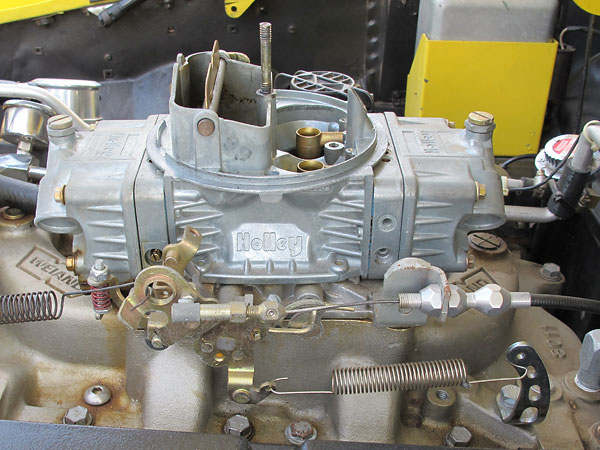
�
Holley Street Avenger 685cfm carburetor.
�
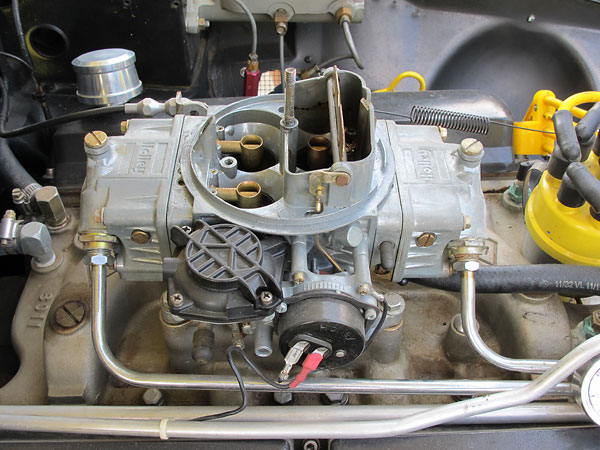
�
The carburetor has an electric choke mechanism.
�
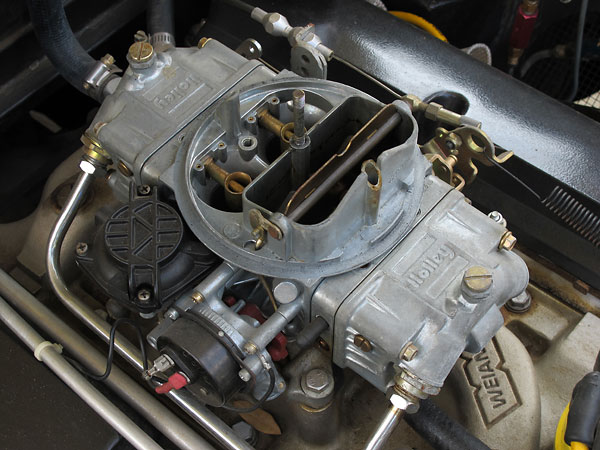
�
Rearward of the electric choke, the black plastic lid of Holley's Quick Change Adjustable
�
Vacuum Secondary. (The carb comes with a choice of springs; you can swap between them.)
�
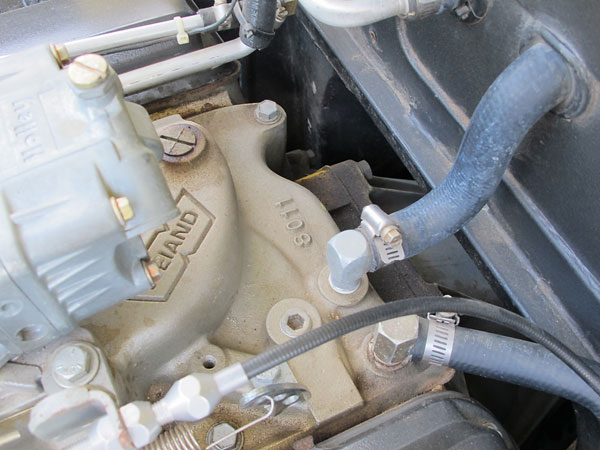
�
Weiand Stealth intake manifold (ported and polished).
�
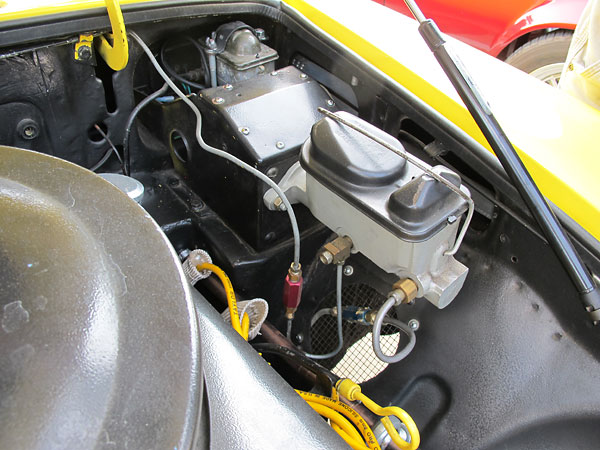
�
Chrysler master cylinder (0.822" bore). MGB power booster removed. Wilwood residual pressure
�
valves added. Ratio on pedal changed from 6:1 to 4.5:1.
�
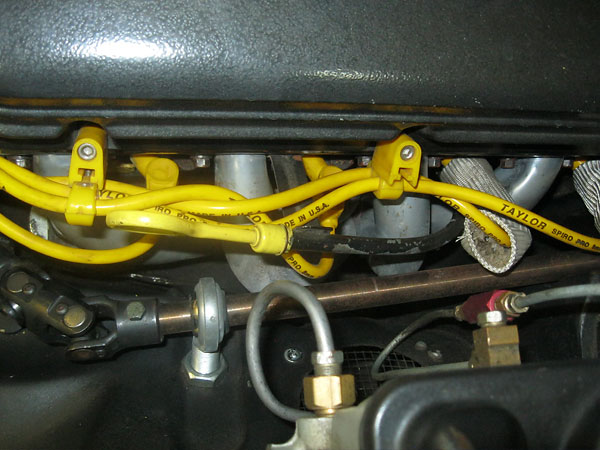
�
Steering routed to clear the exhaust. (Photo by Darian Henderson.)
�
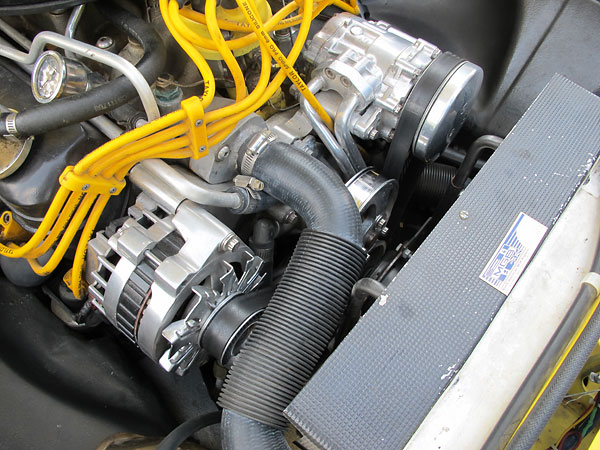
�
Vintage Air Front Runner serpentine belt and pulley system. Sanden A/C compressor.
�
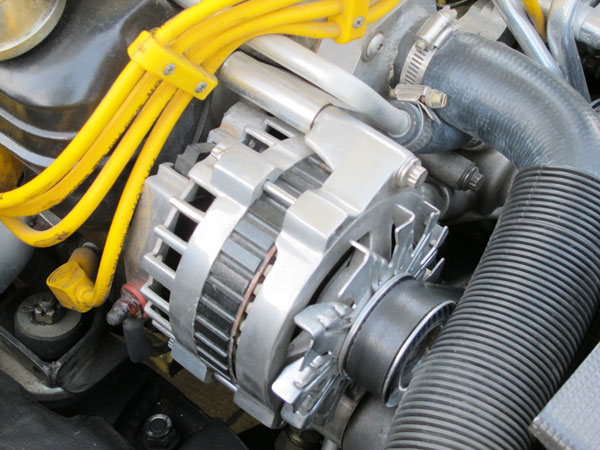
�
145 amp single-wire alternator.
�
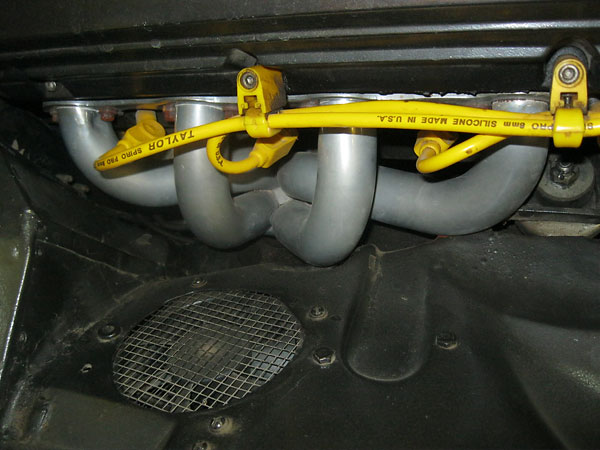
�
Hedman block-hugger 4-into-1 headers with 2.5" collectors. (Photo by Darian Henderson.)
�
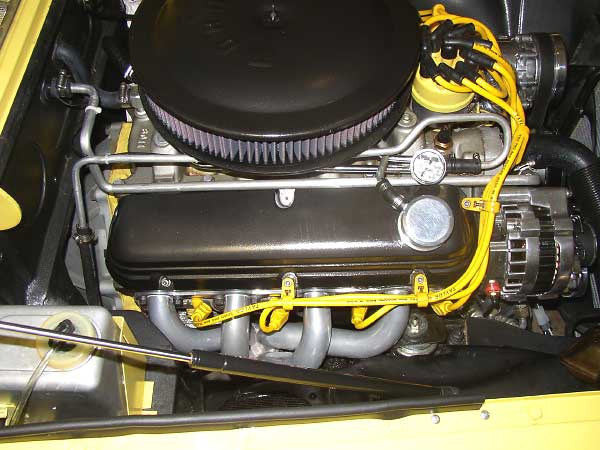
�
Headers have been Jet Hot (ceramic) coated, both inside and out.
�
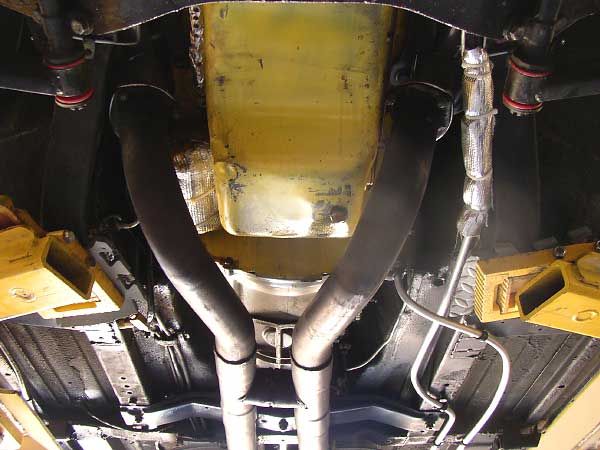
�
H-pipe: exhaust crossover pipe.
�
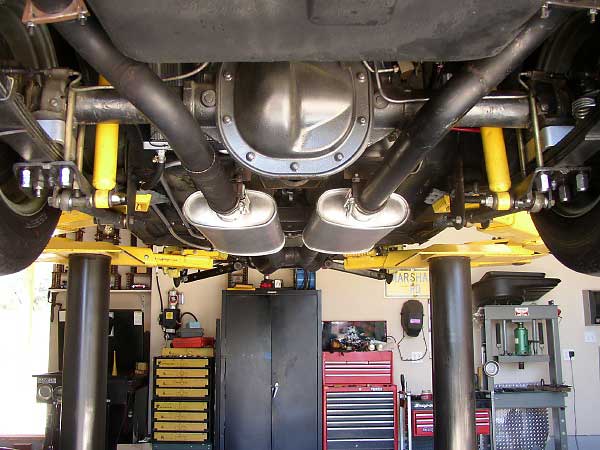
�
Ford 8.8 rear axle.
�
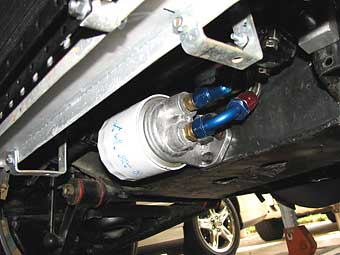 �
�
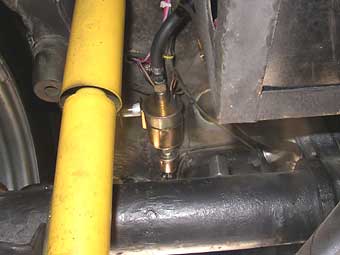
�
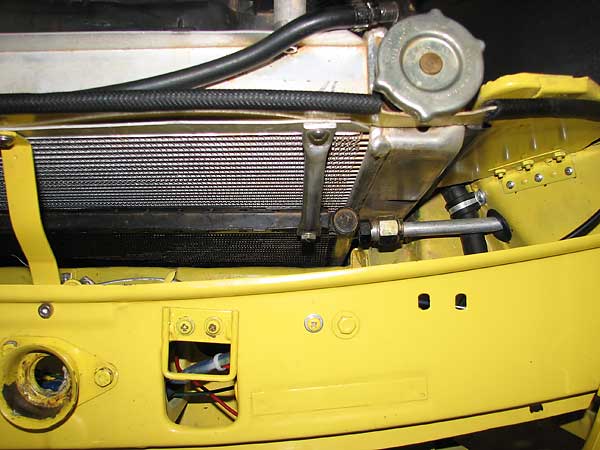
�
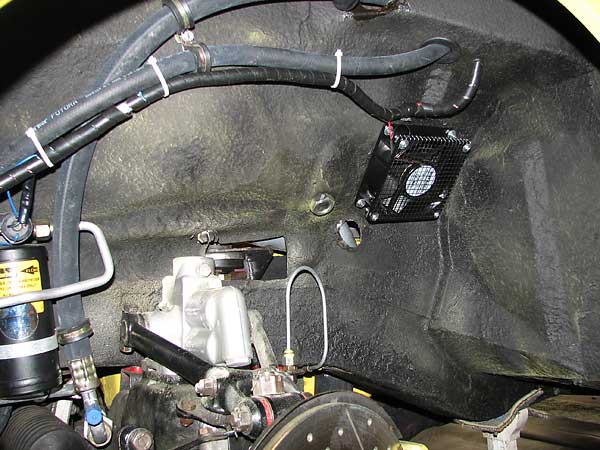
�
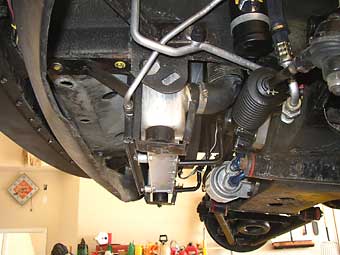 �
�
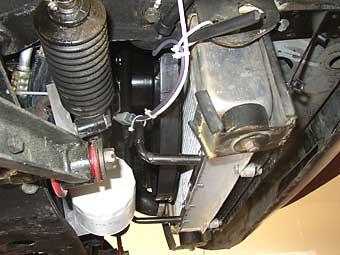
�
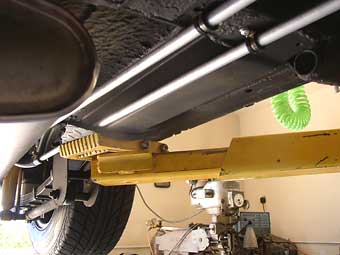 �
�
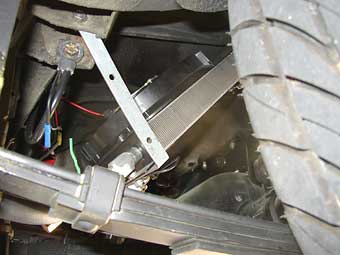
�
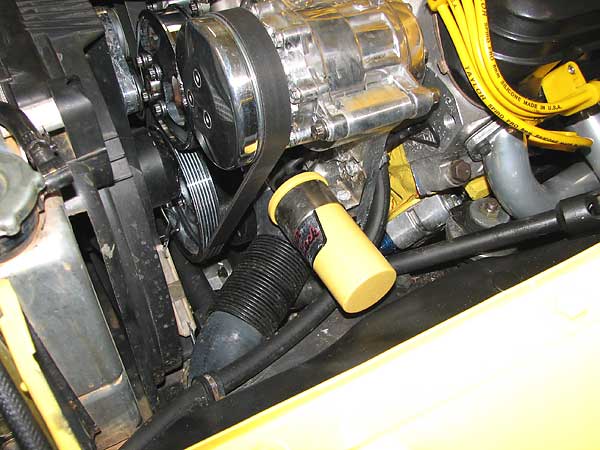
�
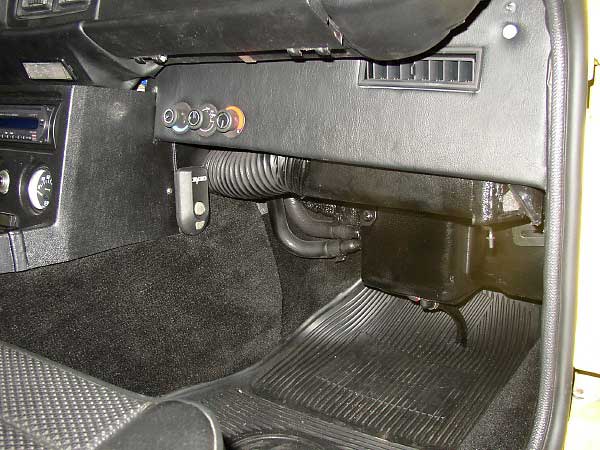
�
Air conditioning controls.
�
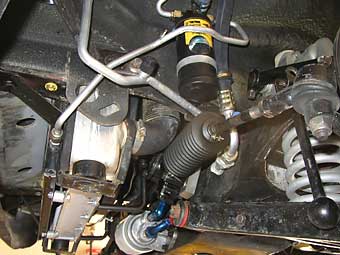 �
�
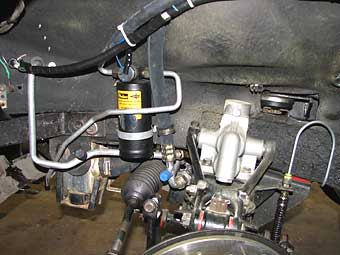
�
| �
Enjoying this article? Our magazine is funded through the generous support of readers like you! � To contribute to our operating budget, please click here and follow the instructions. � (Suggested contribution is twenty bucks per year. Feel free to give more!)� |
Front Suspension
��
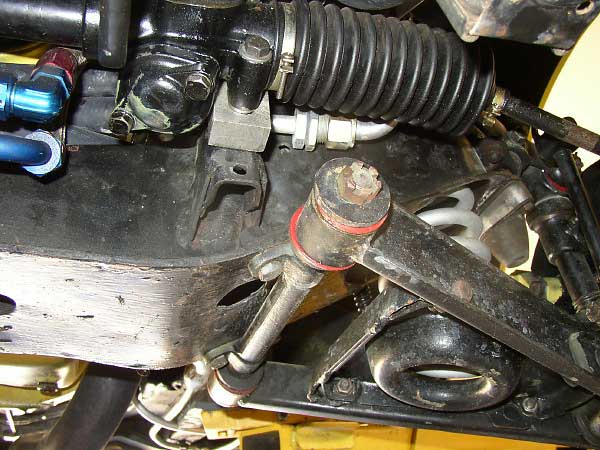
�
Basically stock MGB suspension, but with red polyurethane bushings in lieu of rubber.
�
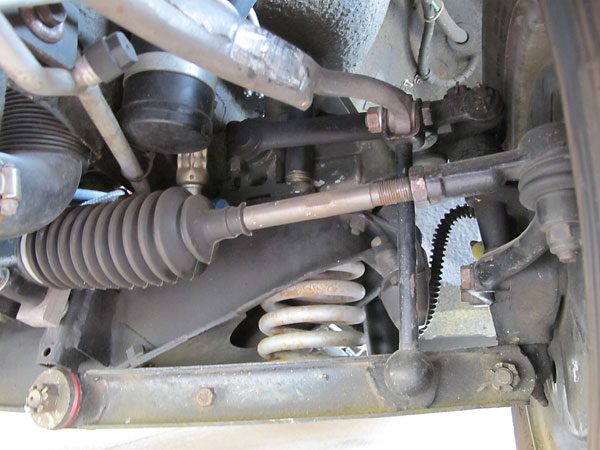
�
The steering rack has been moved higher to suit current, lowered ride height.
�
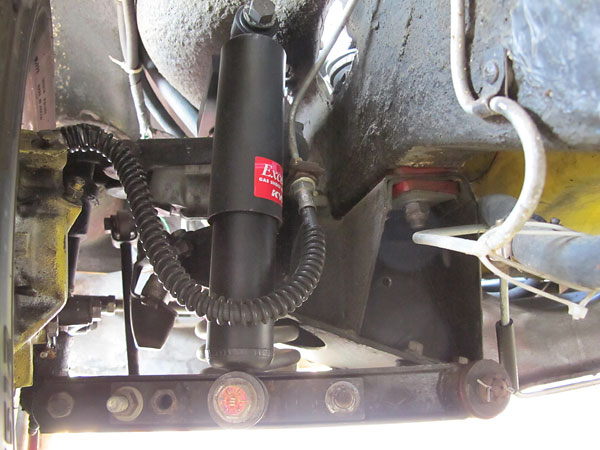
�
Telescoping shock absorbers are a relatively recent addition.
�
Rear Suspension
� �
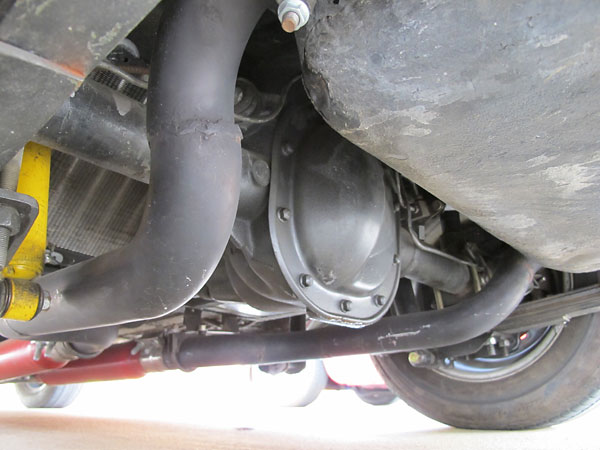
�
Ford 8.8 rear axle (from a 1988 Turbo Coupe) with 3.73:1 ratio and limited slip differential.
�
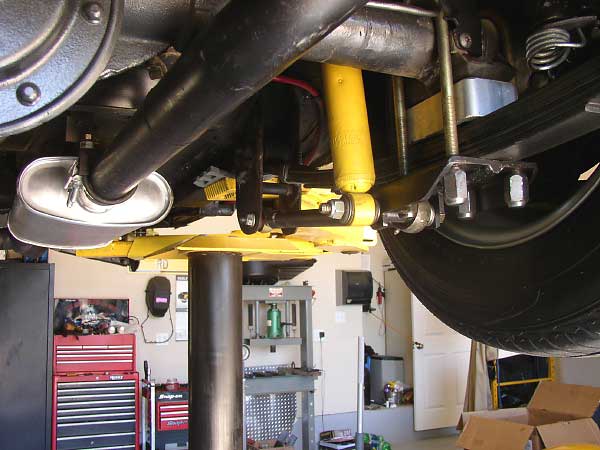
�
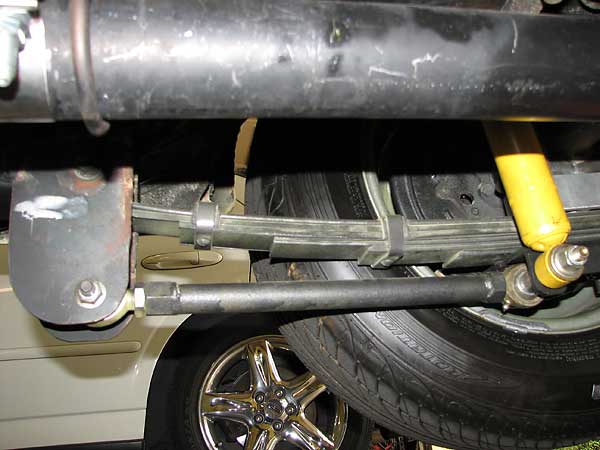
�
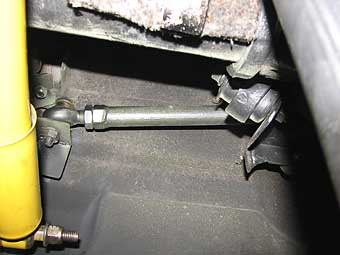 �
�
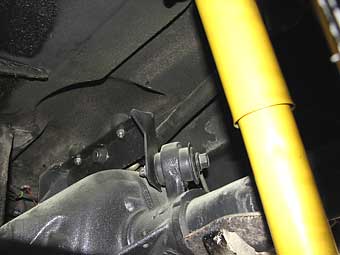
�
Interior
��
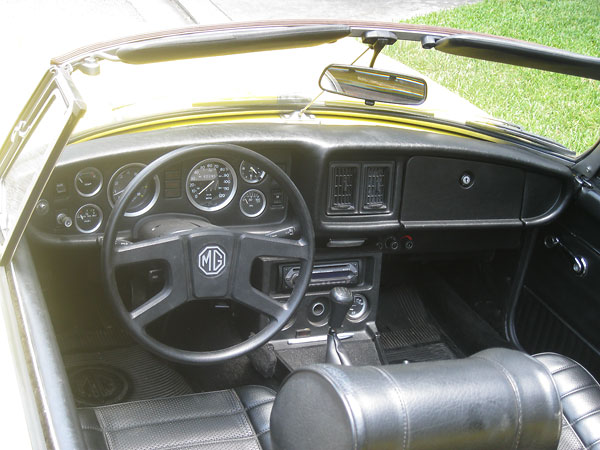
�
MGB interior trim. (Photo by Darian Henderson.)
�
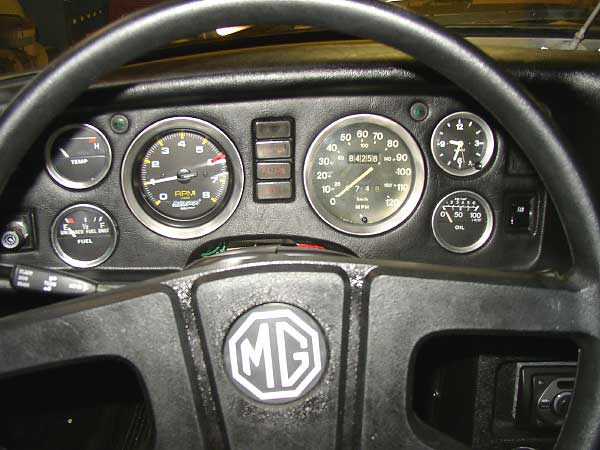
�
Auto-Gauge tachometer.
�
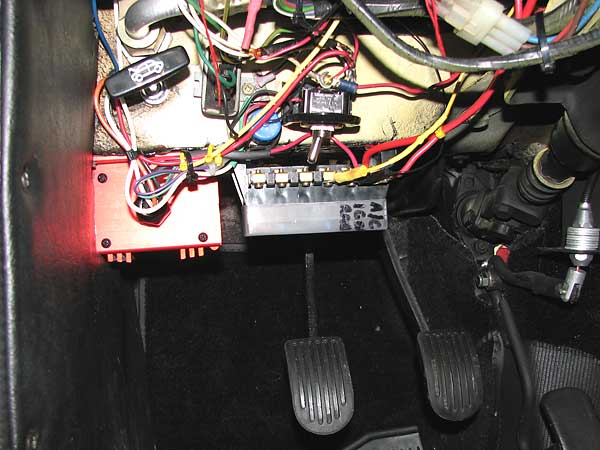
�
Fuse panel and Mallory Hyfire VI multi-spark electronic ignition control box.
�
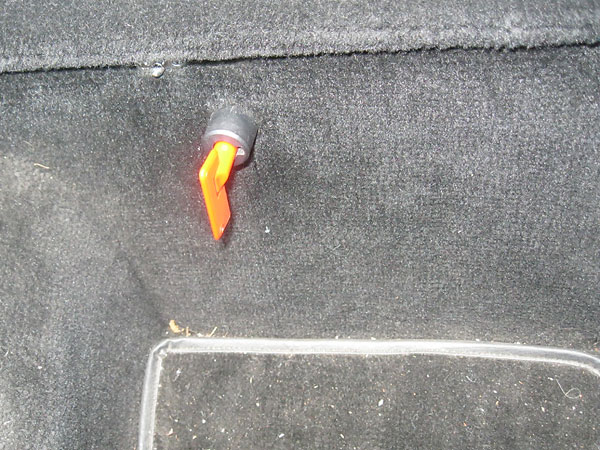
�
A great safety feature: the battery disconnect switch. (Photo by Darian Henderson.)
�
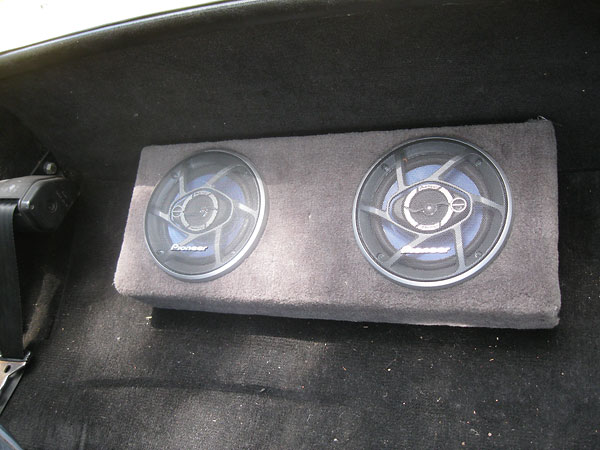
�
Rear-mounted 6" Pioneer speakers. (Photo by Darian Henderson.)
�
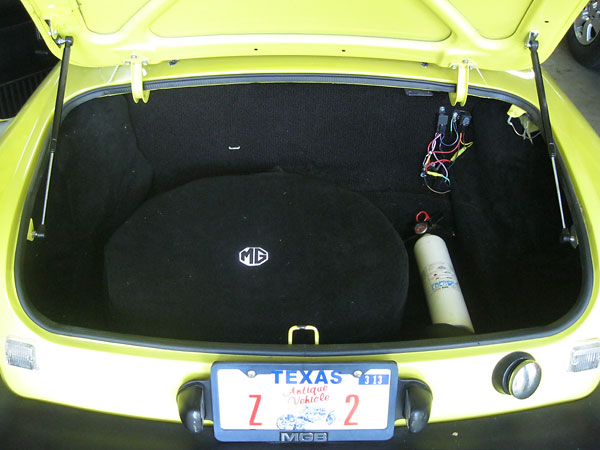
�
Finished trunk, with spare tire. (Photo by Darian Henderson.)
�
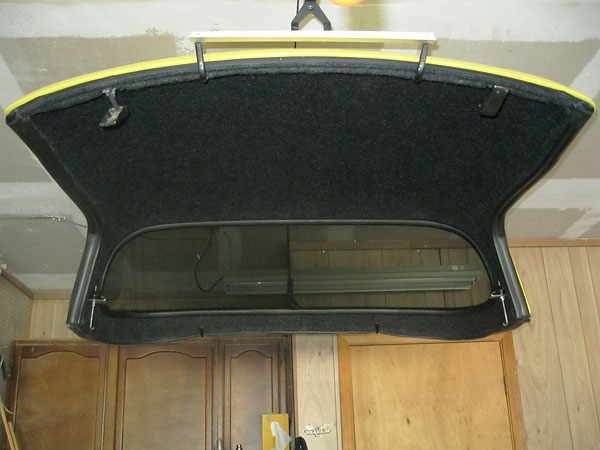
�
Interior of fiberglass hard top. (Photo by Darian Henderson.)
�
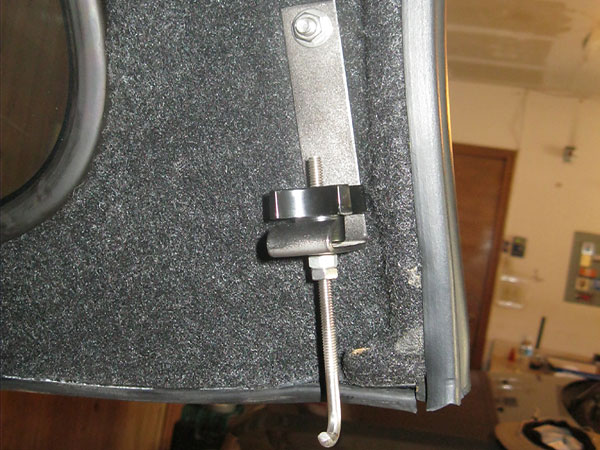
�
Hardtop hold-down clamp. (Photo by Darian Henderson.)
�
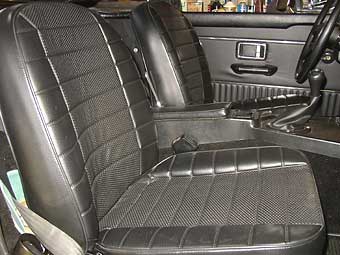 �
�
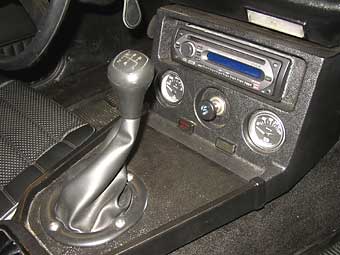
�
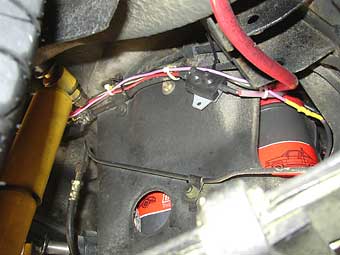 �
�
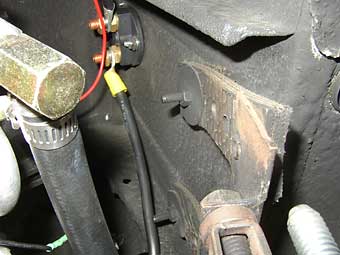
�
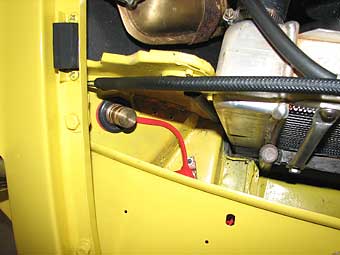 �
�
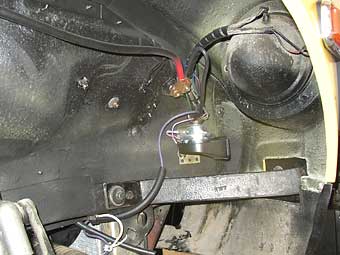
�
Exterior
� �
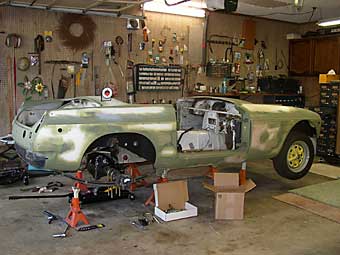 �
�
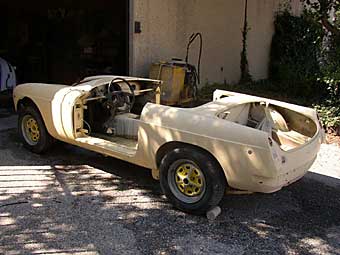
�
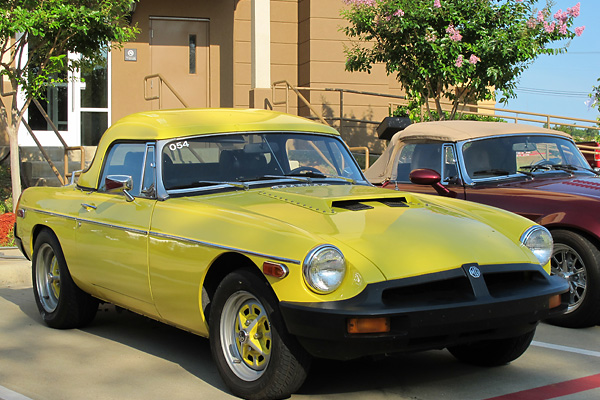
�
1969 Chevrolet Corvette Daytona Yellow (PPG 2094) basecoat/clearcoat paint
�
sprayed by Billy Lieke of Artisan's in San Antonio.
�
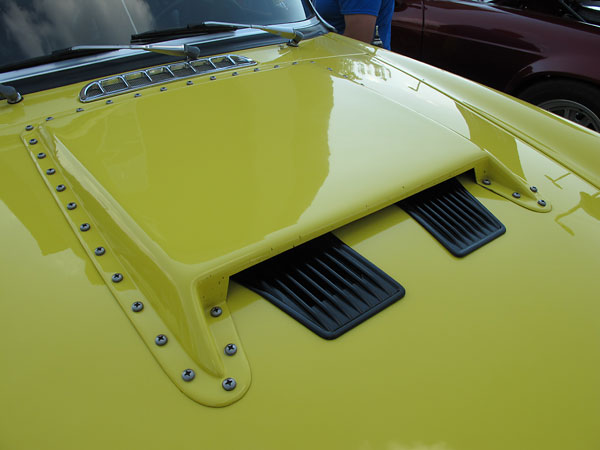
�
A Mustang-style hood scoop provides a generous measure of clearance to the air cleaner.
�
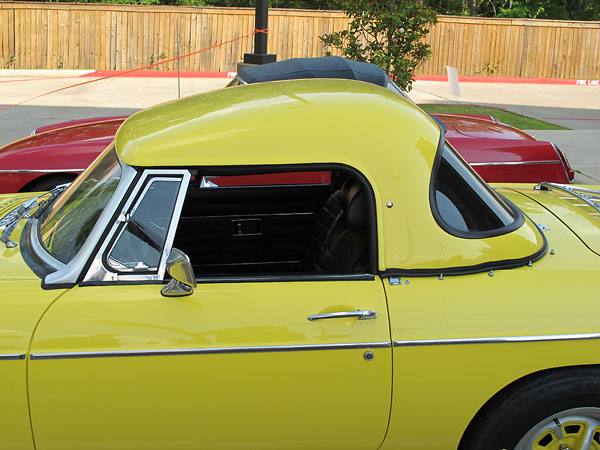
�
For comfortable year-round driving, it's nice to have a well-fitting fiberglass hard top.
�
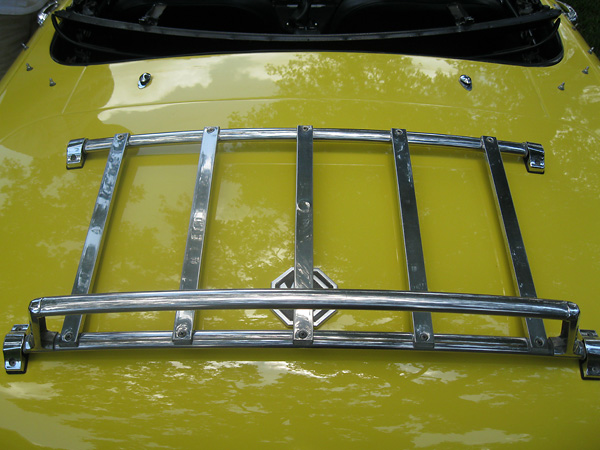
�
MGB luggage rack. (Photo by Darian Henderson.)
�
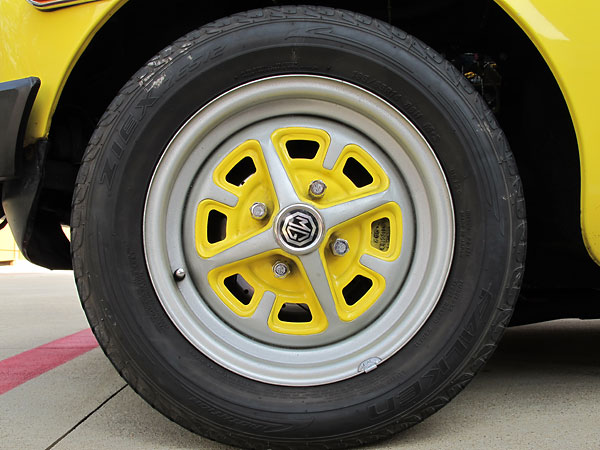
�
Front wheels are stock MGB Rostyle type with 185x60R14 Falken tires (130mph rated).
�
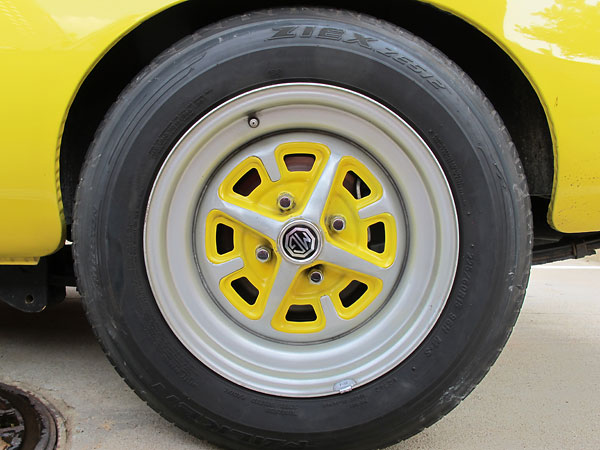
�
Rear wheels are MGB Rostyle centers re-mounted into 15 by 8 Stockton rims with 4.75" offset.
�
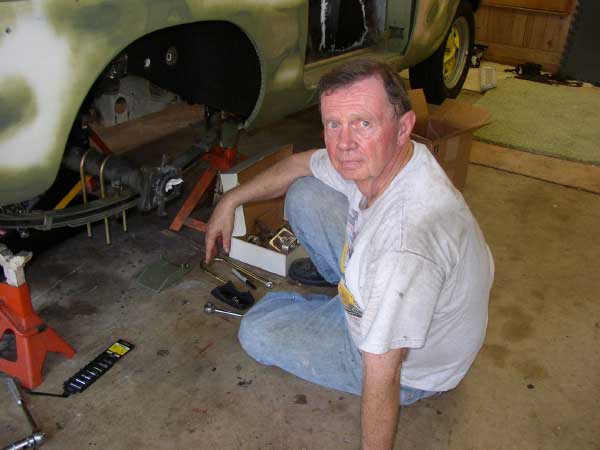
�
Leonard Marshall
�

